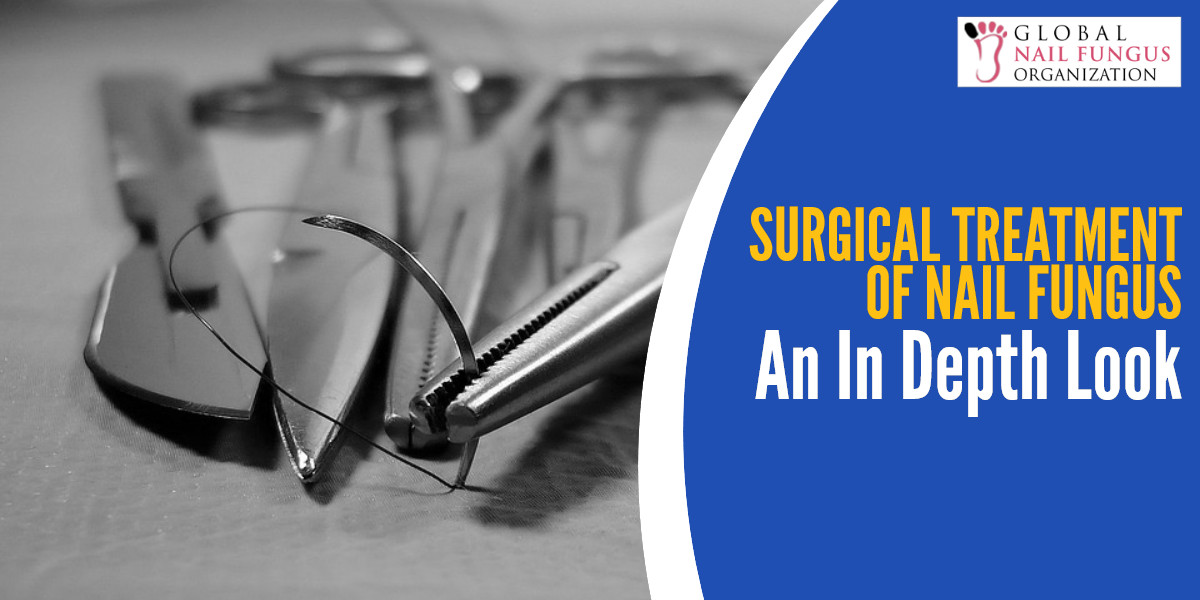 Surgical Treatment of Nail Fungus: An In-Depth Look
Surgical Treatment of Nail Fungus: An In-Depth Look
Table of Contents
Why undergo nail surgery?
Nail fungus is an infection that usually affects toenails, but it can also infect fingernails. If left untreated, nails can become thick, brittle, with unsightly discoloration — which can lead to part of the nail breaking. In some cases, it may be painful. At this point, surgical treatment might be necessary.
What happens during surgical nail fungus treatment?
During surgical nail removal, a doctor will inject pain reliever medication in the affected toe or finger. The skin surrounding the nail will be loosened, and a tool will be used to remove only the diseased part. If the extent of infection is great, then consideration will be made to remove the whole nail.
Risks of Surgical Treatment of Nail Fungus
Like most surgical treatments, procedures for surgically removing nail fungus from fingernails or toenails have multiple risks involved. These include:
- Excessive Bleeding
Before the surgery, a blood test will be taken to assess a patient’s risk of excessive bleeding. The patient may have to discontinue certain medications if they are identified to be at risk of bleeding complications. - Infections
Another risk is of bacterial infection in the wound after surgery. In order to prevent infection, it is recommended that patients take antibiotic cream medication post-surgery. - Abnormal Nail Growth
One thing to consider is possible abnormal nail growth after the surgery. Complications can arise if nail curvature is distorted or thickened, and it can get worse with repeated procedures.
Pre-Surgery
Nail fungus diagnosis
In order to make a proper diagnosis, a clinician will take samples from the source of the fungal infection under the nail. This sample will be tested in the lab for the purpose of identifying the strain of fungus. Other infections like bacteria, psoriasis, and yeast can look like fungus infections to the naked eye . The type of infection will determine what treatment is best.
Consultation: Patient Medical History that may affect surgical procedure
A patient medical history should be obtained which should include: any present illness, previous skin or nail diseases/treatments, any past surgeries, allergies, and current medications. Acute fungal infection in or surrounding the nail would be considered for surgery. However, if antibiotic treatments prove to manage the infection, any nail surgery can be temporarily postponed.
Preparation for Surgery
The patient should undergo a physical exam, as well as a dermatological examination (nails, skin, and hair). To determine if the patient has any bleeding disorder (hemostasis), lab tests are required to measure blood clotting. One week prior to surgery, the patient should discontinue all anticoagulants (blood clotting medication), as well Aspirin (ASA). A meeting with the surgeon is necessary to discuss both risks and benefits of the procedure, any post-surgical difficulties, and possible long-term deformities of the nail.
During the Surgery
Duration of surgery
The length of surgery depends on the methods used. The procedure of removing the nail can usually be finished in one visit, but follow-up surgeries may be necessary.
Use of anesthesia
Prior to surgery, the surgeon will discuss the type of anesthesia to use. The doctor will assure the patient that the procedure will be as pain-free as possible to rest any anxiety. Lidocaine (ointment) is the most likely anesthesia to be used due to the lower risk of allergic reactions during surgery. It takes about 10 minutes for the anesthesia to reach full potency.
Performing nail removal
A complete or partial nail removal may be performed depending on the extent of infection. An instrument (hemostat clamp) is used to drain blood from the surgery. After the nail is removed, an antifungal cream is applied to the avulsed area.
Chemical Matrixectomy
Chemical matrixectomy (partial or full nail removal) involves using chemicals like sodium hydroxide or phenol (preferred choice) to burn the nail matrix in order to destroy that piece of infected nail from being able to grow back again. Only about 7% of patients report the nail growing back. The avulsed area is just like a burn and is treated with antibiotics like Sulfadiazine.
Post Surgery
Supporting treatment & wound coverage after the treatment
After the surgery, the nail will be thoroughly cleansed and treated with antiseptics before being wrapped in gauze dressing to reduce swelling. If fingernail surgery was performed, it may be necessary for the patient to wear an arm sling. The patient will be informed before discharge of possible complications such as swelling, pain, or bleeding that may warrant a return to the clinic to see a physician.
Regular care
After 24 hours, the dressing must be changed; then twice a day until the healing has run its course. It is important that the patient cleans the wound daily with soapy water and use antibiotic ointment before putting on a new dressing. The finger or toe affected may need to be disinfected by 3% hydrogen peroxide for 10 or 15 minutes. For pain relief, it is recommended to use Tylenol, prescription codeine, or anti-inflammatory medication. For toenail surgery, a hard nose orthopedic boot may help protect the wound and aid in the healing process.
Recovery
A full recovery is expected from most nail removal surgeries. The usual prognosis is excellent with minimal complications. The duration for complete recovery is about three weeks. The nail will grow back normally given enough time, except in nail removals where chemical matrixectomy is used.
Follow-up
Generally the physician and patient will follow up within one week to ensure the wound is healing and is infection free. Before this time, the patient should call their physician if experiencing symptoms such as increased swelling of the wound, bleeding, fever, or any signs of infection.
Alternatives to Surgery
Nonsurgical nail avulsion
One non-surgical nail removal is the use of a chemical paste called urea. This is not for treating the fungus, but removes the infected part of the nail and is a bloodless procedure. Since it is painless, there is no anesthesia applied. The benefits include the absence of pain, negligible risk of infection, and an expeditious recovery. The use of the urea may give rise to irritation due to its acidity. Urea dissolves the bond between the area to be avulsed and the nail bed. Before urea is applied, the surrounding areas are covered with tape to prevent irritation. It usually takes a week or more for it to take effect. After the urea treatment, the patient must keep the nail dry for one week, then return to the medical practitioner who performed the procedure to have the infected nail surface removed. After avulsion, the wound is treated with anti-fungal ointment. If necessary, the patient will have to continue taking topical medication until the new nail has grown back.
Laser treatment
Another option for nail removal is the carbon dioxide laser. This procedure is associated with a reduction in swelling and inflammation. One advantage of the carbon dioxide laser procedure is that the laser beam has a limited penetration, and is concentrated only on the matrix tissues; thus, it is as effective as the other procedures where the nail matrix is destroyed.
Lasers have also been proven to clear nail fungus, but not enough data has been compiled by the medical community, and there are no standards or guidelines. That being said, there are some services offering laser treatments for nail infection, with costs ranging between $200 and $500 depending on how many nails are treated.
Use of topical treatments
Topical solutions are the first choice recommended for treating nail fungus. The most commonly used anti-fungal agent available is Undeylenic Acid, approved by the FDA. Daily treatment can last for as long as three months depending on how extensive the fungal infection is. It can also be used to treat fungal infections in patients unable to tolerate chemical or surgical nail removal. Products containing Undeyclenic Acid include EmoniNail, a topical solution known to kill nail fungus and prevent reinfection.
Conclusion: Surgical Treatment For Nail Fungus
If left unchecked, nail fungus can do a lot of damage on your nails causing you to turn to surgery which is costly, high maintenance, and has a number health risks. This is why we recommend using topical treatments during the early stages of nail fungus. Topical treatments are readily available, are more affordable, and have little to no side effects. Visit the Global Nail Fungus Organization’s treatment guide to learn more about how to treat fingernail and toenail fungus as early as possible.










